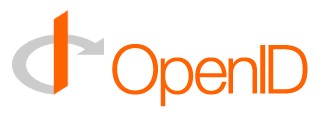SourceForge Community blog announced OpenID support, following Google, IBM, Microsoft, Verisign and Yahoo! decision to join OpenID Foundation board.
 OpenID logo by protimegallery
OpenID logo by protimegallery
OpenID – the open source decentralized framework for user-centric digital identity – is getting tremendous traction and it is estimated that there are over 160-million OpenID enabled URIs with nearly ten-thousand sites supporting OpenID logins (among many also Free Software Magazine).
I asked Scott Kveton , Chairman of the OpenID Foundation board and VP of Open Platforms for Vidoop, to tell us something about the importance of big companies’ support and how it reflects on the business case for OpenID.
Having more and more big companies supporting OpenID has been fantastic for the technology. Let’s not forget that OpenID is nearing its 3rd anniversery of its inception. We’ve covered a lot of ground in such a short time. The fact that organizations both large and small are moving to this technology is a testament to the necessity of it.About the business model of OpenID, that’s an interesting question. Just like my mom didn’t get SMTP, she got email the same will be true with OpenID. The magic isn’t in the technology, its in what the technology enables and the real world solutions it will create for users. This is akin to RSS and Feedburner. Users of Feedburner don’t know they are using RSS but its what powered that company and they found a unique way to monetize that. What are the specific ways that people will do this with OpenID? I don’t have a good answer for that.
Why OpenID is getting included in more and more open source stacks?
OpenID has been added to more and more open source stacks for the same reasons that technologies like PHP, Linux and others have been adopted. OpenID is built in the same “open” fashion as many other technologies on the Internet and a such I think open source developers trust this technologies over other ones. In addition, OpenID solves a problem set for developers that takes away from their “main thing”. If I have a CMS, managing user accounts isn’t my “main thing”; its secondary. Finally, we were very lucky with OpenID and other open source projects in that we launched the OpenID Bounty program which has helped folks like Drupal and Plone see a reward for integrating sooner rather than later.
The consistent increase in adoption of OpenID will tell about OpenID business case. To track the take off of OpenID I asked Ross Turk some feedback about the recent decision to use it.
Our decision to undergo this project was simple. There was a strong community interest, the engineering resources required were modest, and the benefit to our users could be substantial. My dream for SourceForge.net is for it to be a truly open architecture that allows integration with a wide variety of tools and frameworks, and I think my dream is shared by many of us over here. This brings us a step closer.
This was probably the most straightforward thing we’ve done in a long time. Hats off to the OpenID folks for designing something that’s easy to integrate! If it were hard to do, we might not have done it. Of course, that’s the key to the success of anything like OpenID: if it’s not easy to take advantage of, nobody will.
Easiness of integration is key to OpenID success, apparently. I am looking forward to tell about how and if someone will eventually take economical advantage of it.
[tags] OpenID, RossTurk, SourceForge, Identity Management, ScottKveton, OpenID Bounty program[tags]

 Space Invaders Tattoo by
Space Invaders Tattoo by  Trying to grasp that idea by
Trying to grasp that idea by  OpenID logo by
OpenID logo by  Rome in a glass by
Rome in a glass by  Barbie made in Brazil by
Barbie made in Brazil by  Marketing claims by
Marketing claims by  Interesting times by
Interesting times by
Reply